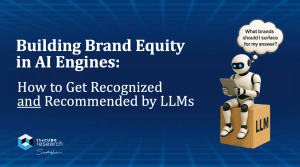ABSTRACT: Vail, Colorado, is emerging as a model for the next generation of smart cities, using agentic AI to enhance Section 508 accessibility compliance, streamline city services, and improve public safety. In partnership with HPE, NVIDIA, SHI, and Kamiwaza, Vail deployed a secure, scalable smart city AI platform that automates digital accessibility, accelerates housing and document workflows, and supports wildfire detection and emergency response. This initiative demonstrates how municipalities can modernize legacy systems, increase operational efficiency, and deliver more inclusive, citizen-focused services — setting a repeatable blueprint for AI-driven government transformation.
Smart cities are shifting away from merely installing cameras and sensors. The next phase is human-centric, powered by agentic AI systems that automate workflows, improve accessibility, and help city staff focus on serving people, not processing paperwork. The Town of Vail, Colorado, is emerging as a pioneer in this shift, using AI to enhance digital inclusion, streamline operations, and improve public safety.
A Mountain Town Solving Big-City Challenges
While Vail’s permanent population is around 3,200 residents, seasonal peaks bring 30,000+ visitors, creating dynamic operational demands. As Town Manager Russell Forrest put it, Vail must deliver “the very highest standard of customer service” while embracing innovation to support residents, seasonal workers, and global visitors.
“We’re a small, beautiful mountain town, but we have big-city issues.”
— Russell Forrest, Town Manager, Vail, CO
That includes everything from parking systems and transit networks to wildfire readiness and digital accessibility.
An Integrated Technology Stack for Smart Government
Instead of siloed pilots, Vail deployed a layered agentic AI architecture built collaboratively by:
- HPE + NVIDIA: Private Cloud AI, sovereign data control, GPU acceleration
- Kamiwaza: Agentic AI backbone (my words), connecting legacy systems & new data sources
- SHI: Systems integration using its Imagine → Experiment → Adopt framework
This ecosystem enables rapid value delivery, scalability, and the ability to roll out new use cases quickly across departments.
Accessibility Comes First: 508 Compliance as a Pillar of Smart Cities
Vail’s first use case prioritized ADA and Section 508 accessibility compliance, ensuring that digital services remain inclusive for residents and visitors with disabilities. Traditionally slow and manual, accessibility remediation is now automated and continuous.
With agentic AI reviewing and updating content, compliance cycles that once took months now happen in hours or days, supporting both regulation and civic values:
“It’s the right thing to do… information should be accessible to everyone.”
This reframes smart city priorities: equity and digital access are foundational, not afterthoughts.
Turning Legacy Housing Records into Actionable Data
Next, Vail aims to address affordable housing, a critical challenge for its workforce. Many deed-restricted housing documents were handwritten or stored in legacy systems, making compliance checks slow and manual.
With AI, Vail digitizes and indexes more than 1,000 records, freeing staff time and accelerating responses to residents.
“It turned barely legible legal documents into a meaningful database… nearly a full FTE in savings.”
Employees now spend more time helping people rather than sorting paperwork.
Modernizing Back-Office Workflows
Beyond housing, Vail will apply AI to transform internal operations, including invoice review and receipt processing. Instead of manually reviewing thousands of financial documents, automated agents now assist staff, enabling rapid processing and more intelligent resource allocation.
“AI can rapidly review and recommend payment… letting our people focus on higher-level work.”
This is not about replacing workers, it’s about amplifying their capacity to serve the community.
Fire Detection & Public Safety Intelligence
Vail aims to use AI for a wildfire mitigation initiative that leverages existing camera feeds, enhanced with AI, to detect risks in real time and support faster emergency responses. The city is also evaluating how AI can streamline property risk assessments that previously required in-person inspections.
In mountain regions where wildfire response time saves lives, AI becomes a public safety force multiplier.
From Workshop to Deployment — in Weeks
The speed of execution is one of Vail’s most striking achievements. From a multi-day ideation workshop in August to an active use case deployed within weeks, Vail demonstrated a modern public-sector innovation model.
“Mind-blowing… we developed four use cases since August.”
The approach proves that government innovation does not need to be slow; with the right architecture and partner ecosystem, AI for municipalities can move at startup velocity.
Why This Matters
Vail’s model for the use of Agentic AI represents the next generation of smart cities:
- Human-centered, not surveillance-centered
- Accessibility-first and compliance-continuous
- Agentic automation across departments
- Sovereign & secure data posture
- Days-to-value, not years
Rather than adding more screens or dashboards, Vail plans to use AI to expand human capacity, increase access, and elevate public service.
As Forrest noted, the work is just beginning, and the excitement in Vail is palpable. The town has proven that smart cities are not defined by infrastructure alone, but by how technology frees people to do meaningful work for their communities.
Our ANGLE
We see what Vail has achieved and the path they have started down as establishing a replicable blueprint for municipalities everywhere. The use of AI to achieve measurable results can be a key enabler. The first set of use cases identified for the Town of Vail focused on solving immediate, high-impact challenges across accessibility, operational efficiency, and public safety.
The team began with Section 508 accessibility compliance, a foundational priority for ensuring that all residents, visitors, and employees, including those with disabilities, can access municipal information. This use case automated what was historically a months-long, manual remediation effort, enabling continuous monitoring and correction of website and document accessibility issues.
Alongside accessibility, Vail prioritized its affordable housing and deed restriction process, a significant operational burden involving more than 1,000 handwritten or poorly scanned documents. Agentic AI digitized and interpreted these records, dramatically speeding up compliance checks and freeing staff time. This led to what is estimated to be a potential full FTE’s worth of savings right out of the gate.
The town also plans to advance back-office automation for financial workflows, including the review of thousands of receipts, invoices, and bills. This use case will enable AI agents to assess documents quickly, recommend payment actions, and reduce the bureaucratic burden on employees, allowing them to focus on higher-value citizen support.
Finally, Vail’s fire department is focusing on wildland fire detection and risk assessment in its initial set, a critical need for a mountain community vulnerable to rapidly spreading fires. By augmenting existing camera infrastructure with AI models, the town can detect potential fire activity earlier, assess severity, and improve emergency response. These initial four use cases formed the foundation of Vail’s smart city transformation, demonstrating immediate value while establishing a repeatable, scalable model for future innovation.
We look at what Vail did in selecting these first use cases and the plans for the next set of use cases as a way for municipalities to choose use cases with tangible benefits and build upon them. The use of AI can help address labor constraints and seasonal demand swings. Having a partner to assist with the deployment of agentic systems, the development of use cases, and not just the technology architecture that connects to existing infrastructure is key, as data silos will never be fully collapsed. As with any product rollout, municipalities should prioritize rapid iteration and aim to scale use cases.
Smart cities aren’t simply about more automation; they’re about more humanity, supported by intelligence. We see this as the model for forward-looking municipalities, whether mountain towns or global metros.
Disclosure: TheCUBE is a paid media partner for HPE, the sponsor of theCUBE’s event coverage, HPE nor other sponsors have editorial control over content on theCUBE Research, theCUBE, or SiliconANGLE



